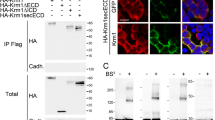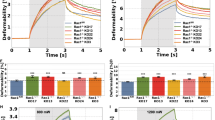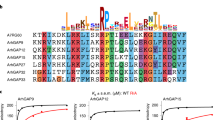Abstract
Previous studies have shown that point mutations in the effector domain of Rac1 block specific downstream pathways such as PAK, JNK/SAPK kinases and membrane ruffling. Specifically, the F37A mutation, made in a constitutively activated Q61L background, activates PAK but fails to induce membrane ruffles. We now show that Q61L/F37A Rac not only fails to induce ruffling but potently blocks membrane ruffling induced by serum or PDGF. In the presence of serum, cells do extend filopodia, suggesting that this mutant only blocks a subset of the effectors that induce cytoskeletal reorganization. At later times, this rac mutant induces membrane blebbing, but not apoptosis. These results show that Q61L/F37A Rac, is constitutively activated with respect to PAK activation but functions as a dominant negative for another pathway, membrane ruffling. That an effector domain point mutant can simultaneously function as a dominant negative and dominant positive for different pathways implies that effects of these variants on cell functions must be interpreted with caution.
This is a preview of subscription content, access via your institution
Access options
Subscribe to this journal
Receive 50 print issues and online access
$259.00 per year
only $5.18 per issue
Buy this article
- Purchase on Springer Link
- Instant access to full article PDF
Prices may be subject to local taxes which are calculated during checkout
Similar content being viewed by others
Author information
Authors and Affiliations
Rights and permissions
About this article
Cite this article
Schwartz, M., Meredith, J. & Kiosses, W. An activated Rac mutant functions as a dominant negative for membrane ruffling. Oncogene 17, 625–629 (1998). https://doi.org/10.1038/sj.onc.1201977
Received:
Revised:
Accepted:
Published:
Issue Date:
DOI: https://doi.org/10.1038/sj.onc.1201977
Keywords
This article is cited by
-
Sema3C signaling is an alternative activator of the canonical WNT pathway in glioblastoma
Nature Communications (2023)
-
miR-124-regulated RhoG reduces neuronal process complexity via ELMO/Dock180/Rac1 and Cdc42 signalling
The EMBO Journal (2012)



